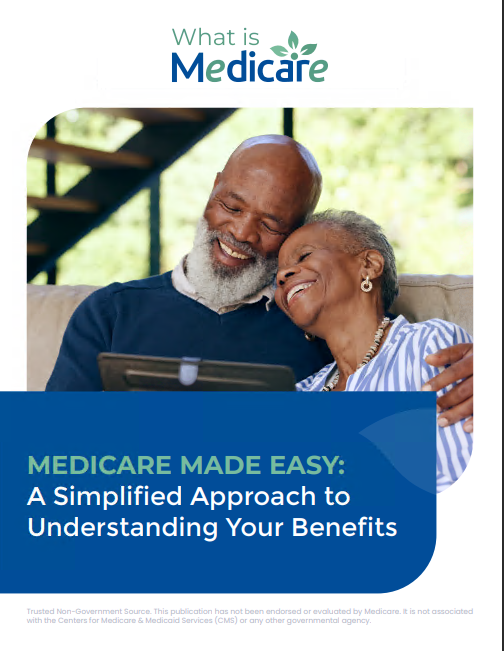Key Takeaways
- Understanding the different parts of Medicare and the enrollment periods can help you avoid gaps in coverage and late enrollment penalties.
- Utilizing resources like the Medicare website and contacting licensed insurance agents can provide additional support during the enrollment process.
Nervous About Enrolling in Medicare? Here’s a Friendly Guide to Get You Started
Navigating the Medicare enrollment process can seem daunting, but with the right information and guidance, you can approach it with confidence. This guide will help you understand the basics, break down the different parts of Medicare, and provide practical tips to make your enrollment journey smoother.
Getting Started: Understanding the Basics of Medicare
Medicare is a federal health insurance program primarily for individuals aged 65 and older, although certain younger individuals with disabilities or specific diseases may also qualify. Medicare is divided into several parts, each covering different types of health care services.
- Medicare Part A (Hospital Insurance): Covers inpatient hospital stays, care in a skilled nursing facility, hospice care, and some home health care.
- Medicare Part B (Medical Insurance): Covers certain doctors’ services, outpatient care, medical supplies, and preventive services.
- Medicare Part C (Medicare Advantage): An alternative to Original Medicare (Parts A and B) offered by private companies approved by Medicare.
- Medicare Part D (Prescription Drug Coverage): Adds prescription drug coverage to Original Medicare, some Medicare Cost Plans, some Medicare Private-Fee-for-Service Plans, and Medicare Medical Savings Account Plans.
Breaking Down Medicare Parts: What You Need to Know
Understanding the components of Medicare is crucial. Original Medicare includes Part A and Part B. If you need prescription drug coverage, you can join a separate Part D plan. Alternatively, you might choose Medicare Advantage (Part C), which bundles Parts A, B, and usually D into one plan offered by private insurers.
- Original Medicare (Parts A & B): Generally provides comprehensive coverage but doesn’t include prescription drugs, so you might need a separate Part D plan.
- Medicare Advantage (Part C): Often includes additional benefits like vision, hearing, and dental coverage. These plans have network restrictions and varying costs.
- Medicare Part D: Offered by private insurers and can be added to Original Medicare. It’s important to enroll when you’re first eligible to avoid late enrollment penalties.
Enrollment Periods: When and How to Sign Up
Knowing when to enroll in Medicare is essential to avoid penalties and ensure continuous coverage. There are three primary enrollment periods:
- Initial Enrollment Period (IEP): A seven-month window starting three months before your 65th birthday month, including the month you turn 65, and ending three months after your birthday month. Most people sign up during this period to avoid penalties.
- Special Enrollment Period (SEP): Available if you delayed Medicare enrollment because you had coverage through your or your spouse’s employment. You can sign up without penalty within eight months of losing that coverage.
- General Enrollment Period (GEP): Runs from January 1 to March 31 each year. If you missed your IEP and don’t qualify for an SEP, you can enroll during the GEP, but you may face penalties.
It’s important to mark these dates on your calendar and ensure you enroll during the appropriate period to avoid any gaps in coverage or additional costs. Additionally, some situations may grant you a special enrollment period, such as moving out of your plan’s service area or losing other health coverage.
Eligibility Requirements: Do You Qualify for Medicare?
Eligibility for Medicare typically starts at age 65. You qualify if:
- You are a U.S. citizen or a legal permanent resident who has lived in the U.S. for at least five continuous years.
- You or your spouse have worked long enough to be eligible for Social Security or railroad retirement benefits.
- You have a disability and have been receiving Social Security Disability Insurance for 24 months.
- You have End-Stage Renal Disease (ESRD) or Amyotrophic Lateral Sclerosis (ALS).
If you meet these criteria, you will automatically be enrolled in Medicare Part A and Part B when you turn 65, provided you are already receiving Social Security benefits. If not, you will need to actively sign up for Medicare through the Social Security Administration.
Common Myths About Medicare Debunked
There are several misconceptions about Medicare that can cause confusion:
- Myth: “Medicare covers all medical expenses.” In reality, Medicare covers many services, but there are gaps, such as long-term care.
- Myth: “You can enroll in Medicare anytime after turning 65.” Enrollment periods are specific, and missing them can result in penalties.
- Myth: “Medicare Part A is free.” While many don’t pay premiums for Part A, it’s not always free, especially if you haven’t paid Medicare taxes for a certain period.
- Myth: “You don’t need additional coverage beyond Original Medicare.” Depending on your health needs, you might benefit from additional coverage like Medigap, Medicare Advantage, or Part D plans.
- Myth: “Medicare is the same for everyone.” Individual health needs and financial situations vary, so the best plan for one person might not be ideal for another.
Tips for Choosing the Right Plan for You
Selecting the right Medicare plan involves evaluating your health needs, budget, and preferences. Consider the following:
- Healthcare Needs: Do you have chronic conditions that require frequent doctor visits or specific medications? Choose a plan that covers your prescriptions and preferred healthcare providers.
- Budget: Consider premiums, deductibles, copayments, and out-of-pocket maximums. Ensure the plan fits your financial situation.
- Provider Networks: Medicare Advantage plans have network restrictions. If you prefer a wider choice of providers, Original Medicare might be better, but supplement it with Medigap and Part D.
- Additional Benefits: Some Medicare Advantage plans offer benefits beyond what Original Medicare covers, such as vision, dental, and hearing care. Assess whether these additional benefits align with your needs.
- Prescription Drug Coverage: If you take prescription medications regularly, it’s crucial to select a plan that includes a comprehensive Part D option or check if your chosen Medicare Advantage plan includes drug coverage.
Navigating the Medicare Website: A User’s Guide
The Medicare website (medicare.gov) is a valuable resource for understanding and managing your Medicare benefits. Here are some tips:
- Use the Plan Finder Tool: Compare Medicare plans based on your location, prescriptions, and healthcare needs. This tool allows you to input your medications and preferred pharmacies to find plans that cover your specific needs.
- Create a MyMedicare Account: Manage your benefits, view your claims, and access personalized information. This account provides a centralized location to keep track of your healthcare services and monitor your coverage.
- Download Publications: Access guides and fact sheets that provide detailed information on various aspects of Medicare. These resources are updated regularly to reflect any changes in the Medicare program and can help you stay informed.
Where to Find Help: Resources and Contacts
Several resources can assist you with Medicare enrollment and questions:
- Medicare.gov: The official website offers comprehensive information and tools. It’s the best place to start for accurate and up-to-date information about Medicare.
- 1-800-MEDICARE: Call for assistance with enrollment and general questions. This hotline is staffed with knowledgeable representatives who can help answer your questions.
- State Health Insurance Assistance Programs (SHIPs): Provide free, personalized counseling and assistance. SHIPs are available in every state and can offer localized support tailored to your specific situation.
- Licensed Insurance Agents: Can help you understand your options and choose the best plan for your needs. These agents are trained to navigate the complexities of Medicare and can provide valuable insights.
By utilizing these resources, you can make more informed decisions and ensure you are choosing the best possible coverage for your health needs.
Feeling Confident About Enrolling in Medicare
Enrolling in Medicare doesn’t have to be overwhelming. By understanding the basics, knowing when and how to enroll, and utilizing available resources, you can navigate the process with ease. Remember, it’s important to review your options carefully and choose the coverage that best meets your health and financial needs. Don’t hesitate to reach out for help if you need it—many resources are available to support you every step of the way.
Contact Information:
Email: [email protected]
Phone: 3135558901










